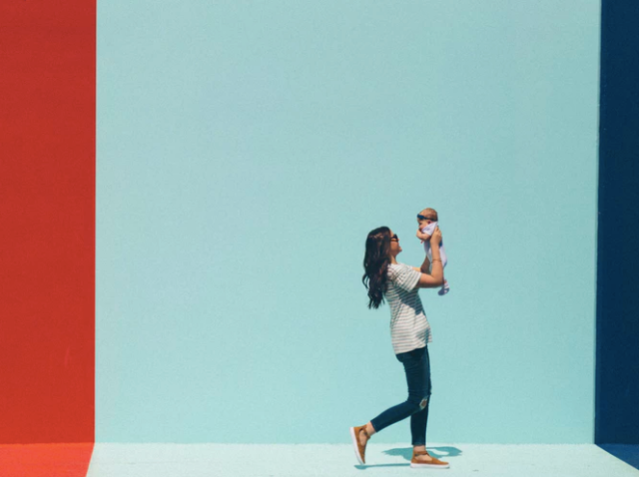Any medical advice presented here is expressly the views of the writer and Red Tricycle cannot verify any claims made. Please consult with your healthcare provider about what works best for you.
During pregnancy, back pain is very common. After delivering a child, it is likely to take a couple of weeks before any pain reduces. That being said, back pain can quickly return, especially if you are picking up your child a lot. It is natural for your child to gain weight as they grow, which can lead to an increased risk of back pain. The process of lifting is difficult on your spine. Put it this way, you are likely lifting a seven to ten pound child every day, for anywhere up to fifty times; by the end of one year, that weight will have increased to seventeen pounds, and by the end of two years, that weight is more likely to be anywhere between twenty-five and thirty pounds.
Additionally, plenty of parents either hold their children for a long time in static positions or even do a lot of bending. There are, thankfully, things that you can do to try and prevent back pain following a pregnancy, such as: changing the way you carry out activities, and spine-strengthening exercises. There are also other medical methods that you can consider, and a method known as epidural stimulation.
Here are our top tips for new moms after pregnancy:
- First, consult your obstetrician and discover when may be a suitable time to start exercising again, and if so, to also clarify how much exercise is realistic for you to undertake. If for example, you had a cesarean (C-Section), it may take longer before you can resume exercise.
-
Your obstetrician should be able to give you the all-clear to exercise. Once this happens, you may begin an exercise routine by using simple yoga, and stretching exercises; these will help to return hip and back flexibility. If you are struggling to find any time to do these exercises, then you can take advantage of doing so during your baby’s nap time.
-
Use a childminder to help you get involved with exercise groups that offer a secure and fun exercise environment. Finding a pilates or yoga will help to strengthen muscles, and possibly reduce back pain.
To Avoid Back Pain When Lifting:
-
Make sure that when you lift your child, you do so with the knees bent, and not from the waist. Squat down, tighten your stomach muscles and lift using your legs.
-
When you pick up your baby, avoid stretching your arms out. Lift your baby from close to your chest, and avoid twisting your body.
To Avoid Back Pain When Feeding:
-
Avoiding upper back pain can be made easy by not bending over your baby to breastfeed. Bring your baby towards your chest; make it more comfortable by putting two pillows on your lap to support the weight of your baby.
-
If you are nursing, do so from a firm, upright chair. Do not use a soft chair or couch.
-
Another great tip involves removing the tray from your high chair when you are either putting the baby in or out of it.
To Avoid Back Pain While Carrying Your Baby & Traveling:
-
You can use a ‘front pack’ to carry your baby when you are walking.
-
Never carry your child from the hip area, this is because the muscles from your back can become too pressured.
-
If you are putting your child into the car seat, do so while kneeling down—do not do so while standing. It is true that the safest place to seat your child is into the middle of your car seat. If you decide to opt into doing this, then you could do so whilst sat at either side of your child.
-
If you have an infant car seat. You could consider fastening the seat into the car permanently, and then simply (with knees bent or sat at either side of the infant seat), put or remove your child from the seat.
If your back pain is not going away by any of these methods and that you are looking for medical treatments to help, one innovative method out is epidural stimulation. Epidural stimulation involves inserting a chip into the protective coating of the spine (the dura). This chip release flows of electric currents that are controlled by a remote. The remote is controlled by a user, who can change it according to their own comfort level. It has been proven that if combined with physical therapy, those with loss of limbs have been able to move again, and those with worsened mobility have seen improvements in their condition.











